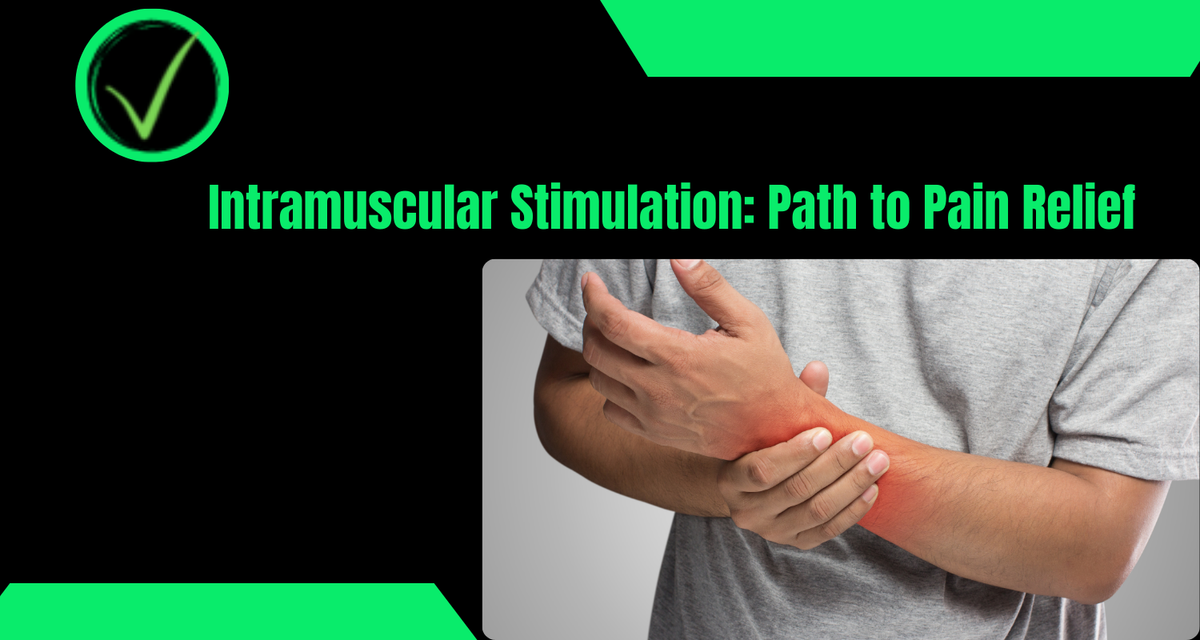Intramuscular Stimulation: Unraveling the Path to Pain Relief

Intramuscular Stimulation (IMS), often referred to as "dry needling," is a specialized therapeutic technique used to alleviate muscular pain and dysfunction.
This minimally invasive procedure involves the insertion of thin needles into trigger points within the muscles to release tension, improve blood flow, and promote healing.
In this comprehensive guide, we will explore the world of Intramuscular Stimulation, its principles, techniques, and how it can be a valuable component of your pain management and rehabilitation journey.
Table of Contents
- Introduction to Intramuscular Stimulation (IMS)
- Understanding Trigger Points
- The Science Behind IMS
- Benefits of IMS
- IMS Techniques
- What to Expect During an IMS Session
- Safety Considerations
- Conclusion
1. Introduction to Intramuscular Stimulation (IMS)
Intramuscular Stimulation, often abbreviated as IMS, is a medical procedure that involves the precise insertion of fine needles into muscular trigger points.
These trigger points are areas of hyperirritability within muscles that can cause pain, stiffness, and restricted mobility.
IMS aims to release these trigger points and restore muscle function.
2. Understanding Trigger Points
Trigger points, also known as myofascial trigger points, are knots or tight bands of muscle fibers that can develop in response to injury, overuse, or stress.
They are often a source of localized pain and can refer pain to other areas of the body.
3. The Science Behind IMS
IMS works on the principle of "needle stimulation." When a thin needle is inserted into a trigger point, it can elicit a twitch response in the muscle.
This twitch response helps relax the muscle fibers, release tension, and increase blood flow. It also promotes the body's natural healing mechanisms.
4. Benefits of IMS
a. Pain Relief
- IMS is highly effective in reducing muscular pain, whether it's related to chronic conditions, sports injuries, or everyday muscle tension.
b. Improved Mobility
- By releasing trigger points and relaxing tight muscles, IMS can lead to improved range of motion and flexibility.
c. Enhanced Healing
- IMS stimulates blood flow to the affected area, which can accelerate the body's natural healing processes.
5. IMS Techniques
a. Superficial IMS
- Superficial IMS involves inserting needles into the skin and underlying superficial tissues. It is suitable for addressing surface-level trigger points.
b. Deep IMS
- Deep IMS involves inserting needles deeper into the muscle tissue to access trigger points located further beneath the surface. This technique is effective for addressing deeper muscular issues.
6. What to Expect During an IMS Session
During an IMS session:
- A trained practitioner will assess your condition and identify trigger points.
- Sterile, disposable needles will be inserted into the trigger points.
- You may experience a twitch response or a sensation like a quick muscle cramp.
- The needles are typically left in place for a short duration (usually around 10-15 minutes).
- After the session, you may experience temporary soreness, but this usually subsides within a day or two.
7. Safety Considerations
- Ensure that your IMS practitioner is qualified, trained, and licensed to perform the procedure.
- Inform your practitioner about any underlying medical conditions, allergies, or medications you are taking.
- Expect some discomfort during the procedure, but it should not be excessively painful. Communicate with your practitioner if you experience severe pain.
- IMS is generally considered safe when performed by trained professionals, but it may not be suitable for everyone. Consult with your healthcare provider to determine if IMS is appropriate for your condition.
8. Conclusion
Intramuscular Stimulation (IMS) offers a promising path to pain relief, improved mobility, and enhanced healing for those dealing with muscular discomfort and dysfunction.
By targeting trigger points within muscles and stimulating natural healing responses, IMS provides an effective solution for a wide range of musculoskeletal issues.
If you're seeking a non-invasive, evidence-based approach to managing pain and improving muscle function, IMS may be a valuable addition to your healthcare toolkit.
Consult with a qualified practitioner to explore how IMS can benefit your specific needs and embark on a journey toward a pain-free and more functional life.
